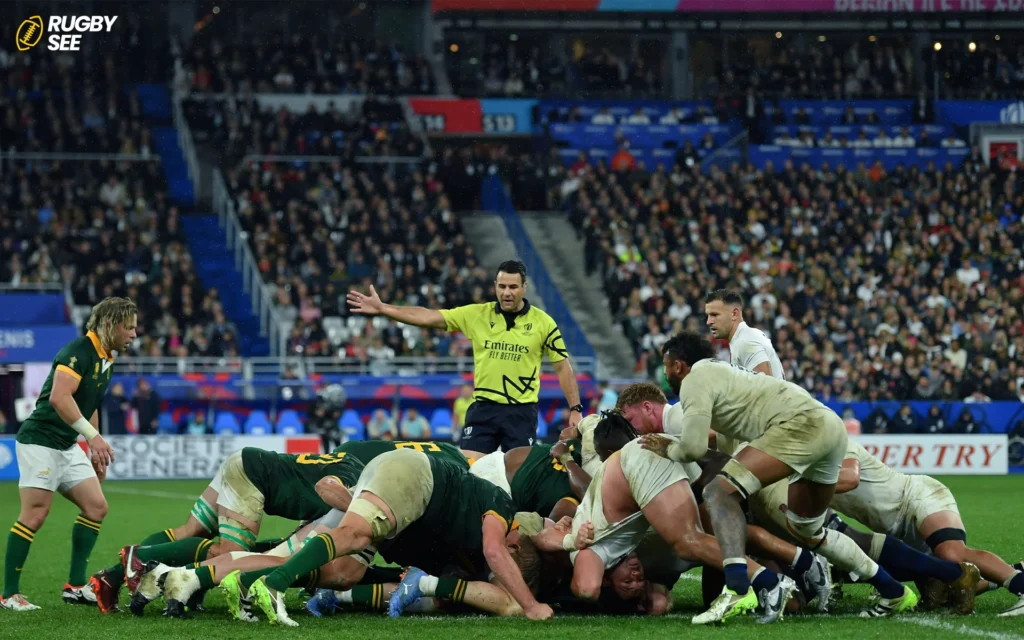In the heart-pounding world of rugby, the scrum stands out as a testament to the sport’s physicality and strategic depth. However, this iconic aspect of rugby is also a complex ballet of rules and penalties. Understanding scrum penalties is crucial for players, coaches, and fans alike, as these moments can pivot the game’s outcome. This guide aims to demystify scrum penalties, providing insights into their causes and how they can be avoided.
This content has a lot of information for people who are interested in this sport, because you will be fully acquainted with its dos and don’ts, so stay tuned to Rugbysee.
The Essence of the Scrum
Before diving into penalties, let’s revisit what a scrum entails. A scrum is a method of restarting the game after a minor infringement, involving eight players from each team locking together in a battle of strength and technique. The objective? To win possession of the ball. Yet, within this contest lies a myriad of potential penalties, each with its rules and nuances.
Common Scrum Penalties Explained
1. Collapsing the Scrum
A collapsed scrum is not only dangerous but also a significant infringement. Penalties for collapsing can result from players losing their footing, failing to bind properly, or intentionally bringing the scrum down. Safety is paramount, and referees are quick to penalize any action that jeopardizes player welfare.

2. Early Engagement
The timing of the scrum engagement is governed by the referee’s commands. Teams engaging before the referee’s signal are penalized for early engagement. This rule ensures fairness and safety by preventing premature physical confrontations.
3. Improper Binding
Players must bind in a specific manner within the scrum. Front-row players, for example, must bind on their opponent’s body in a way that promotes stability and safety. Incorrect binding can lead to penalties, affecting the team’s chance to secure the ball.
4. Feeding
The scrum-half must feed the ball straight into the scrum’s tunnel. Any deviation aimed at giving their team an unfair advantage results in a ‘feeding’ penalty. Fair competition is the goal, ensuring both teams have an equal chance to win the ball.
5. Standing Up
Players within the scrum must remain bound and in position until the scrum concludes. Standing up prematurely disrupts the scrum’s integrity and can lead to penalties, reflecting the importance of maintaining the contest until the ball is rightfully won.
6.Wheeling
While a scrum can naturally move and rotate, excessive or deliberate wheeling—where the scrum turns more than 90 degrees—is penalized. This rule prevents teams from manipulating the scrum to disrupt the opposition’s opportunity to win the ball.

Strategies to Minimize Scrum Penalties
Focus on Technique
Proper scrum technique is the best defense against penalties. Regular, focused training on binding, positioning, and engagement can help teams navigate the scrum’s complexities more effectively.
In this content, you are fully acquainted with the penalty and its guide. If you want to know about the penalties of the rugby game, read the content Why Did Rugby Union and League Split? A Deep Dive into History.
Understand the Rules
A deep understanding of the scrum rules is essential for players and coaches. Knowledge of what constitutes a penalty can inform strategies and training, reducing the likelihood of infringements.
Communication
Clear communication between players, and between players and the referee, can prevent many scrum penalties. Listening to the referee’s commands and signals ensures that teams engage correctly and adhere to the rules.
Scrum penalties can significantly influence the flow and outcome of a rugby match. By understanding the reasons behind these penalties and employing strategies to avoid them, teams can enhance their performance and enjoy a safer, fairer game. Whether you’re a seasoned player or a new fan, grasping the intricacies of scrum penalties enriches your appreciation of rugby’s strategic depth and the skill required to excel in this beloved sport.










